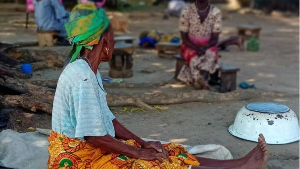Ghana has lost an estimated GH¢50 million for not reviewing upwards stumpage fees of natural forest timber species for the past 11 years.
It is estimated that the country loses an average of GH¢ 5 million annually for not increasing the fees. The last time the fees were reviewed was in July 2003. Timber companies pay GH¢ 25 as stumpage fee for Odum and sell it for about €800 in countries like Germany.
Information gathered by The Finder indicates that powerful timber merchants in Ghana allegedly lobby people who have influence on the Forestry Commission (FC) to ensure that the Commission did not increase stumpage fees of natural forest timber species for the past 11 years.
According to information, the Forestry Commission reviewed the fees for 2014 and has accordingly written to all the timber companies and authorities notifying them of the new rate effective March 1.h.
However, immediately the letter dated February 18, 2014 was received, influential people started mounting pressure on the Commission not to go ahead with the new rates.
With the existing rates, stump fees generate GH¢10 million a year and the Forestry Commission keeps GH¢ 5 million and the remaining GHD 5 million is shared among the Office of the Administration of Stool Land, the Stool that owns the land, the Traditional Authority and the District Assembly.
When the new rates are implemented, stumpage fees would double to GH¢20 million per annum, of which the Commission would keep Gh¢ 10 million and the other stakeholders also share GH¢ 10 million.
The Timber Resources Management Regulations Legislative Instrument (L.I.) 1649, which was amended by L.I. 1721, mandates the Forestry Commission to review stumpage fees on the harvesting of timber species for commercial purposes.
The increase took into account the FOB prices from the latest minimum guiding prices of the Timber Industry Development Division and the interbank rates (buying) of the euro as at February 18, 2014.
The revenue loss is affecting the finances of the Commission and other stakeholders. As of January 2007, for both on and off reserve, 50% was deducted by the FC in order to secure its management and regulation services, and the other 50% was split between the Office of the Administration of Stool Land (OASL) and other beneficiaries.
After the OASL has taken 10% as administration fees, the remainder is shared as follows: 25% to the Stool through the Traditional Authority for the maintenance of the Stool, 20% to the Traditional Authority, and 55% to the District Assembly within the area of authority of which stool lands are situated.
The Commission needs to implement the new rates to reflect the current economic realities to ensure that it generates adequate revenue to fund its mandate of managing, protecting and developing the forest state of the country and at the same time generate adequate revenue for landowners and the district assemblies who rely heavily on the proceeds from the stumpage fees.
The change in stumpage fees for some high-demand trees is Asafina, from GH¢25.20 to GH¢ 112.04; African black wood, from GH¢ 12.39 to GH¢ 149.16; Candolllei, from GH¢ 21.68 to GH¢ 86.37; Sapele, from GH¢27.37 to GH¢ 130.72; and Utile, from GH¢ 31.60 to GH¢ 135.38.
The Commission staggered the charging of the increase as follows: 50% from March 1, 2014, increase it to 75% in September, and 100% in January 2015.
General News of Monday, 10 March 2014
Source: The Finder













